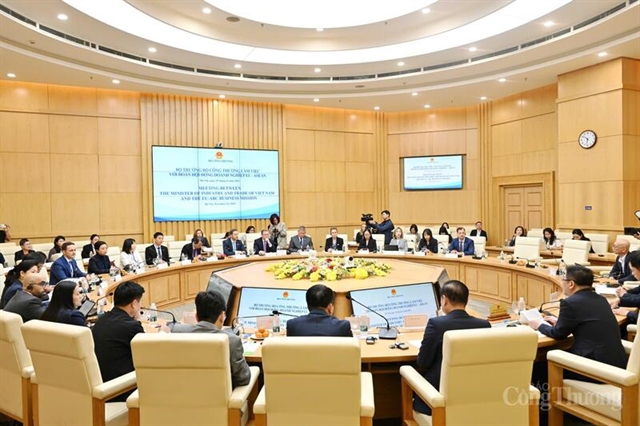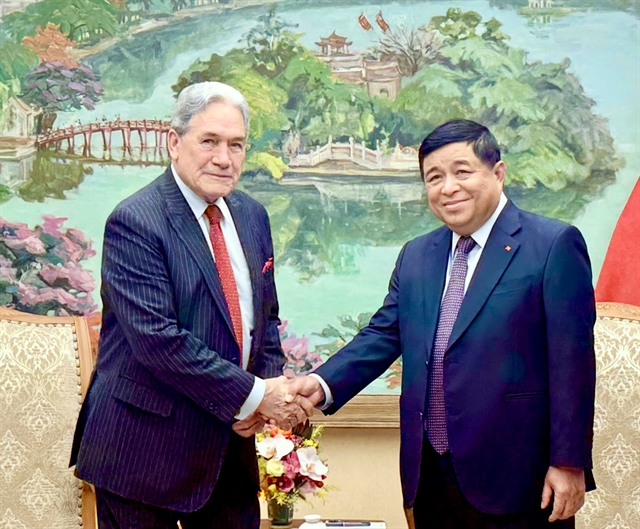.jfif) Opinion
Opinion

Nguyễn Trùng Khánh, director general of the Việt Nam Tourism Administration, talks to Vietnam Economic Times newspaper about his agency’s efforts to improve the tourism sector’s competitive advantages.
| ||
| Nguyễn Trùng Khánh. — Photo vneconomy.vn |
Nguyễn Trùng Khánh, director general of the Việt Nam Tourism Administration, talks to Vietnam Economic Times newspaper about his agency’s efforts to improve the tourism sector’s competitive advantages.
How has Việt Nam’s tourism sector developed in the last few years?
The tourism sector has gained quite remarkable successes in the last few years and become a spotlight in national socio-economic development. In 2018, the country welcomed some 15.5 million foreign tourists, plus 80 million Vietnamese tourists and earned net income of some VNĐ637 trillion (US$27.4 billion) from tourism services. As a result, the financial contribution of the tourism sector in 2018 accounted for about 8.29 per cent of the country’s GDP.
In the first eight months of 2019, Việt Nam welcomed more than 11,310,000 foreign tourists, up 8.7 per cent compared with the same period of 2018. As a result, the total revenue from tourism sector in the last eight months was VNĐ442 trillion, an increase of 9.6 per cent compared with the same period in 2018.
Thanks to its fast development and good services, the tourism sector has been awarded notable prizes from international tourism organisations, including 'Asia’s Leading Destination 2018' prize by the World Travel's Awards. Meanwhile Forbes Magazine selected Việt Nam as one of 14 places to visit in 2019.
What should Việt Nam do to get a higher ranking in the international tourism sector?
The World Economic Forum which was held on September 4 has released the 2019 report on the competitiveness of the tourism sector of 140 world economies based on tourism activities in 2017-2018. In that report, Việt Nam ranked 63rd economies. However, Việt Nam ranked fifth among Southeast Asian economies and 13 out of 22 among countries in the Asia Pacific region.
To improve its tourism competitiveness, Việt Nam should focus on improving tourism services, giving more priority to the tourism sector, improving the business environment and information technology.
Has the Vietnamese tourism sector developed a plan for its human resources development?
Human resources development, particularly the high-quality human resources, has been a big challenge for the tourism sector. We now have about 2.5 million people working in tourism, but only some 800,000 of them are directly working in the sector. It is projected that by the year 2020, Việt Nam's tourism sector will need some 1 million people working directly in the sector. By 2025 the figure will rise to 1.6 million and by 2030, it will be about 2.25 million. In the coming years, each year, the tourism sector will need some 100,000 well trained people to work in the field.
The problem the sector faces is a shortage of experienced human resources. Another issue is the poor foreign language skills of tourism workers. As a result, the Việt Nam Tourism Administration has developed a plan on how to improve the foreign language skills for people working in the sector, particularly the use of the ASEAN professional criteria in tourism training courses.
How do you respond to the suggestion that tourism development should be controlled to avoid 'hot development' and to protect the environment?
Sustainable tourism development is an objective in the 'Strategy for Việt Nam Tourism Development by the Year 2030 with a Vision to 2050'.
To achieve that strategy and vision, our tourism sector has to exert efforts to implement Resolution No 8 of the Party Central Committee on tourism development.
The tourism sector also has to expand its tourism market, both domestically and internationally while diversifying its products along the lines of sustainable tourism development. — VNS




